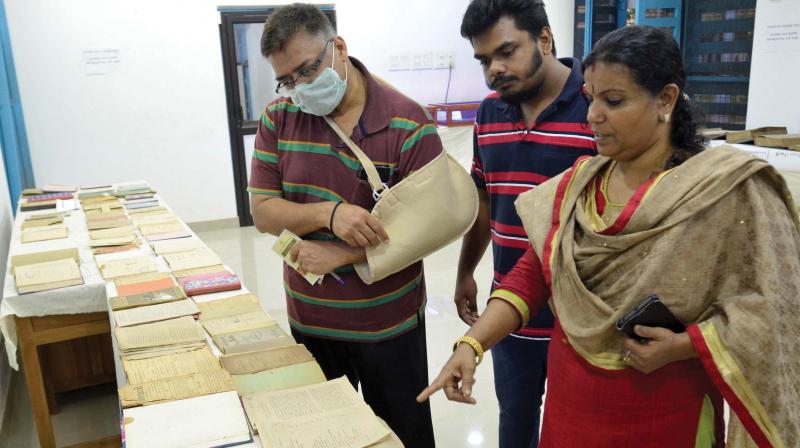Kerala to get palm-leaf manuscript museum soon
The Central Archives has 11,000 such manuscripts, called Churunas.

Thiruvananthapuram: State archives department is planning a Churuna Museum. Churunas are scrolls of palm-leaf manuscripts kept in a bundle of loose leaves. Archives director P. Biju said the plan was to utilise the ground floor of the present central archives and also space where the Kerala Bookmark functioned. The Bookmark would soon vacate their office. The digitalisation of all the records of the archives department is also going on. When completed, the digital copies can be made available to those who apply by paying the price, sources said.
The manuscripts depicting events in Travancore history have been kept for display at an exhibition of the department at the Central Archives office here as part of the World Heritage Week, which will close on Tuesday. Churunas are stored in boxes called Churunapetties in a variety of sizes and shapes. The Central Archives has 11,100 churunas in its possession, which is perhaps the most extensive collection of palm-leaf manuscripts in the whole world.
Each consists of an average of 1000 cadjan leaves of about 90 cm long and 2.5m cm wide on an average, and both sides of the leaf are used for recording events. They are written in different ancient scripts used in the state like Vattezhuthu, Kolezhuthu, Malayanma, Tamil and also in old Malayalam. Each bundle deals with different subjects, not necessarily connected to each other. The records preserved in these archives are grouped into four-cadjan leaves, bamboo splint records, copper plates and paper records.
The cadjan records are classified into three; cadjan churnas, cadjan grandhas and loose leaves. Most of them consist of pre-settlement land revenues records. The old records possessed by the celebrated temple of Sri Padmanabha Swami here, the tutelary deity of the Royal House of Travancore is popularly known by the name "Mathilakam Records” because the temple establishment is known in common parlance as “Mathilakam”.
This collection consisted of about 3000 churunas. The survey and settlement of Travancore commenced in 1885 A.D during the reign of Sri Moolam Thirunal was finalised in the year 1910. The collection consists of settlement registers of various villages. The agreement reached for the construction of Mullaperiyar Dam by the then Maharaja of Travancore and the Secretary of State of India on October 29, 1886, is also present at the archives. Old school textbooks dating back to 1881, records on palm leaves, bamboo splints, copper plates and paper are also on display.

